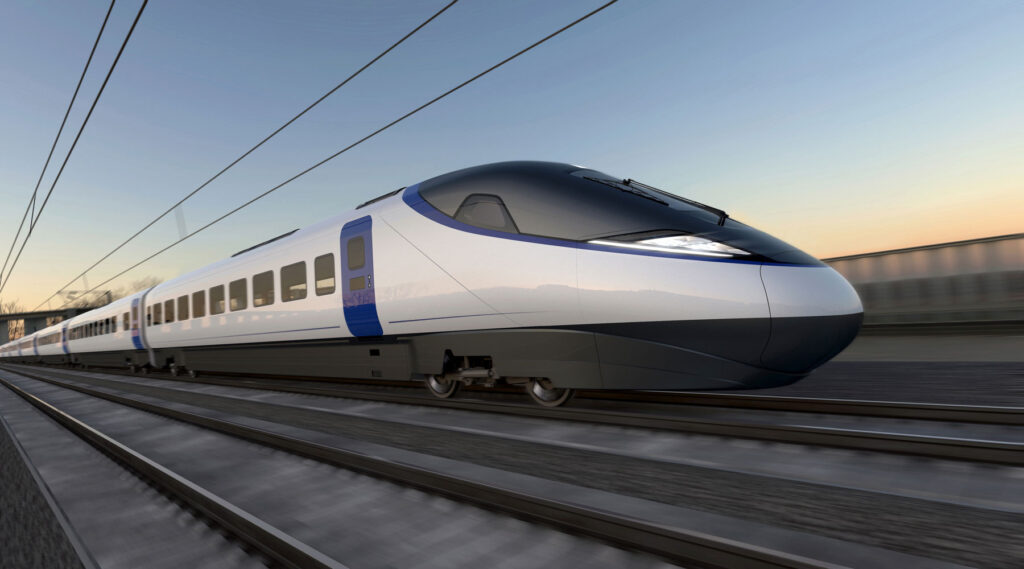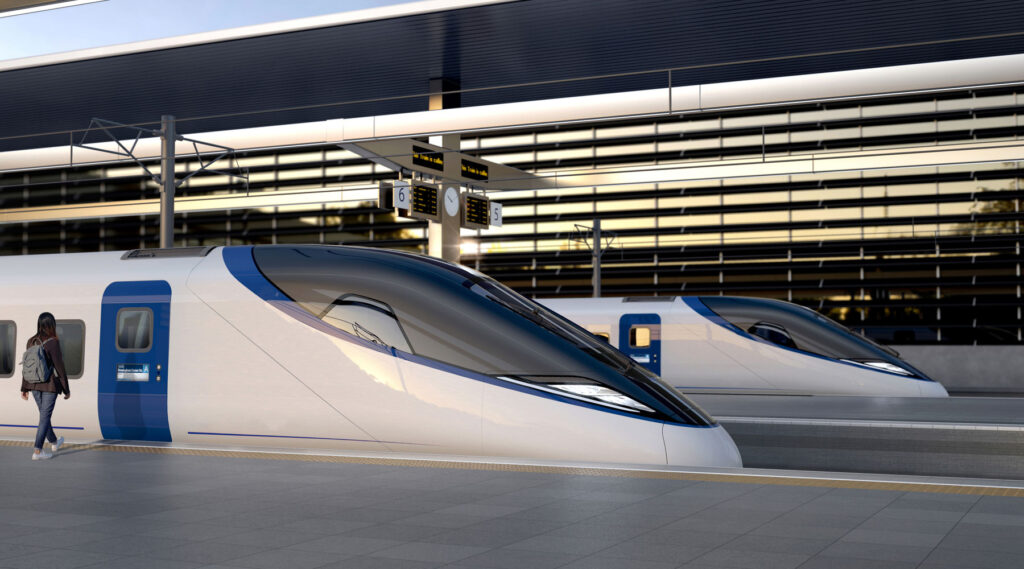A contract worth £2 billion to build a fleet of 54 high-speed trains in the UK has been signed today by HS2. In total, 54 new trains, each capable of reaching 225mph will be built by Alstom and Hitachi Rail, at their factories in County Durham, Derby and Crewe.
The contract is considerably cheaper than had been previously expected coming in at around £2 billion compared to the £2.75 billion that had been estimated in 2017 when the procurement process started. This was put down to the competitive bidding process for the contract.
The design, manufacture, assembly, and testing of the new trains will be shared between Hitachi Rail and Alstom, although the interior layout will be decided later, following a design process involving HS2, the Department for Transport and the train operator.
The first stages of building the 432 HS2 bodyshells including vehicle body assembly and initial fit-out will be done at Hitachi Rail’s facility in County Durham, where Hitachi Rail recently invested in new welding and painting facilities. The second stage of fit-out and testing will be done at Alstom’s factory in Derby.
That splitting of the work will also result in plenty of photo opportunities to see part-built HS2 trains being moved between County Durham and Derby on slow freight trains.
In another boost for train-building in the UK, all the bogies (which house the wheelsets) will both be assembled and maintained at Alstom’s Crewe facility – the first time since 2004 that both jobs have been done in the UK.
The first train is expected to roll off the production line around 2027, and the first passengers are expected to be carried between 2029 and 2033.
Each of the new trains will be around 200m long — about the same length as an Elizabeth line train — with the option to couple two units together to create a 400m long train with up to 1,100 seats.
An option to build the trains to European mainland sizes was rejected as it would have limited them to High Speed lines only, in favour of the slightly more expensive option of building them to UK loading gauges so that the trains can swap between HS2 and existing mainline services. The downside to the flexibility is that the High Speed trains are designed for a modern straight high-speed railway, so will in fact be slightly slower than tilting intercity trains on the older rail network.
The trains will though benefit from Hitachi Rail’s low noise pantograph – the arm which collects power from the overhead wires. Developed in Japan, this technology will make it quieter than comparable high speed trains and use regenerative braking to boost energy efficiency. It will also be 15% lighter and offer 30% more seats than comparable high-speed trains in Europe.
The fleet of trains will carry around 85 million people per year, and by taking all the intercity traffic off the existing railway, will free up loads of capacity on the older railways for more regional and local train services to be added later. Carrying an estimated 26,000 people per hour, HS2 has been likened to the equivalent of building two new motorways if people were to drive instead.
Alongside, design, manufacturing and testing, the contracts also included 12 years of maintenance which could be extended in the future to cover the estimated 35-year life of the rolling stock. The fleet will be maintained at a new maintenance depot being built by HS2 on the outskirts of Birmingham.









“although the interior layout will be decided later,” contracts, to me, with “It will also … offer 30% more seats than comparable high-speed trains in Europe.”
Which might also be the £0.75m cost difference.
This all sounds like one of those big-low, bill-high projects we’re so familiar with.
And that’s an HS2 fan speaking…
“It will also … offer 30% more seats than comparable high-speed trains in Europe.”
So bugger all legroom again.
If the budget is £2 billion for 54 trains it means that each one is: £40,000,000 (approx)
Interesting that they’ve gone for a unified fleet of trains compatible with the existing network rather than a split fleet with some that are built for the high speed network only (so a London to Birmingham and then Manchester shuttle), which could have been built to be wider (more legroom!) and use the full 400m length of the platforms.
Perhaps the flexibility will prove to be worth it – but it does send out a message that they’re not expecting the high speed network to expand any further for another 30 odd years.
Wider will give more elbow room not leg room. They will ne 200m units, coupled together they will be 400m just like all the TGVs in France.
Many thanks for this very interesting over view.